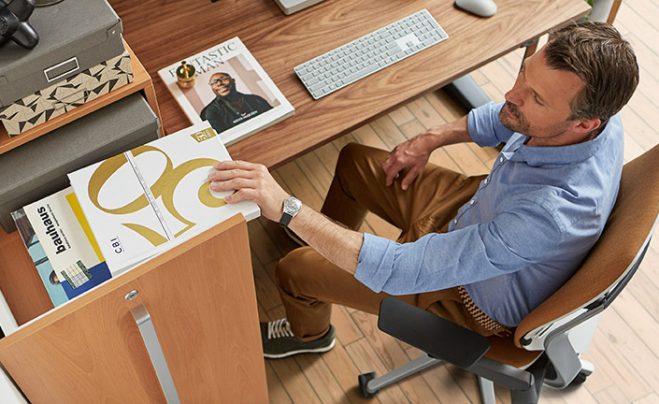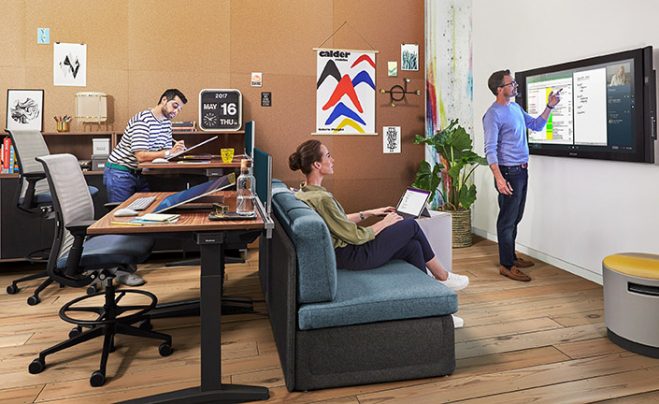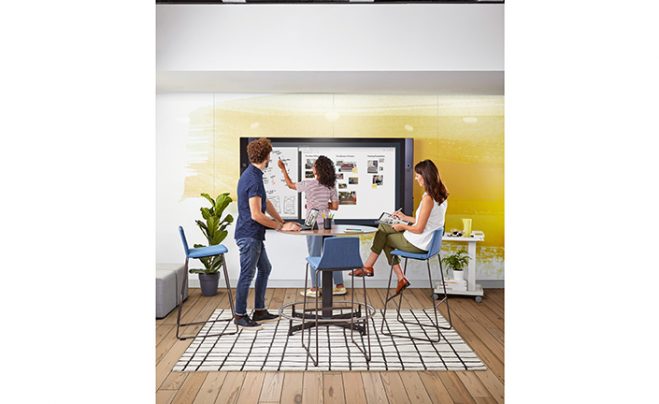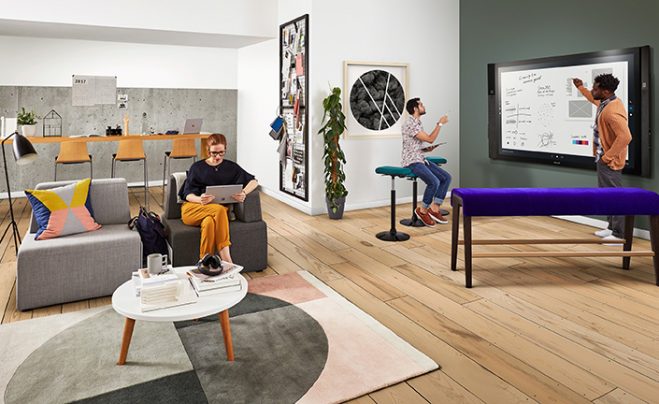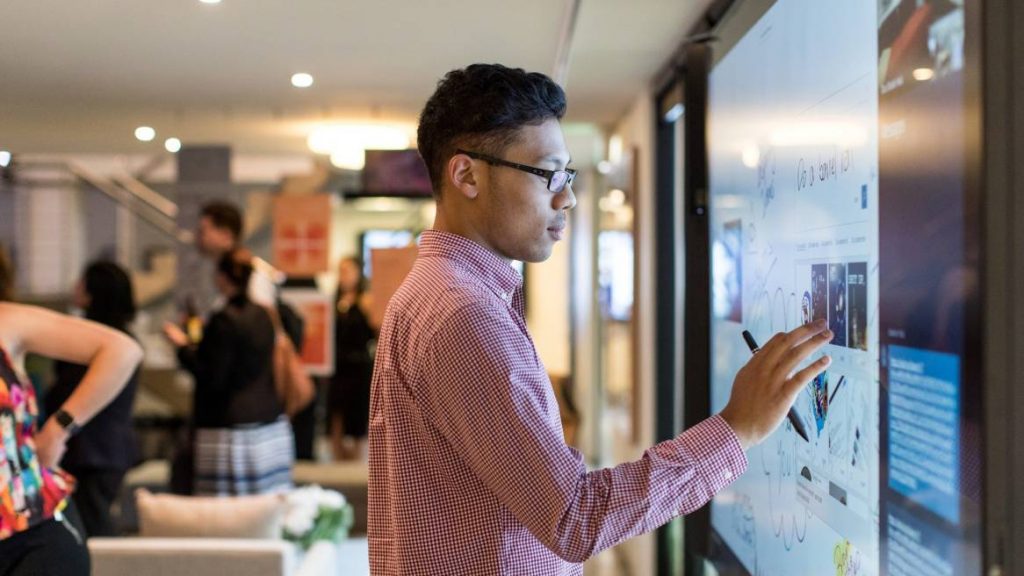
Digital Transformation
Australians enlist creative spaces to foster new ideas
Steelcase and Microsoft played host, in November 2017, to business leaders, architects and designers from across Australia to introduce Creative Spaces — an ecosystem of technology-enabled spaces designed to boost creative work. An expert panel gathered in Sydney to discuss new insights and solutions created to help people reach their creative potential at work.
Steelcase global research director, Chris Congdon, Microsoft senior director of Surface marketing, Julia Atalla and partner at IDEO, a global design and innovation consulting group, John Ravitch, addressed how crucial it is for organizations to foster creativity in order to be successful today.
“Via technology, change in business is coming more quickly than ever — and from multiple directions — most of which are difficult to anticipate,” said Ravitch. “The best way to address the speed of this change is to create a nimble, more creatively competent workforce.”
To be creatively competent, Ravitch explained, teams need to become more oriented towards exploration and experimentation — the outcome of which is new ideas and faster learning which significantly increases the likelihood of market success.
Despite progressive workstyles in Australia such as activity-based working, where people have different spaces available for different types of work, there remains significant untapped potential. While Australians rate their quality of life at work slightly above average, they also grapple with a workforce no more engaged than the rest of the world. Just 12 percent of Australians are highly engaged and highly satisfied at work (Steelcase Global Report: Engagement and the Global Workplace).
“With employee engagement relatively low, it’s important to introduce physical and visual cues to help people do things differently,” said Atalla. “People are creatures of habit. If you want to unlock human creativity, you need them to break their habits and try something new. Space and technology can be the subtle cues to help people be more creative and help teams perform better.”
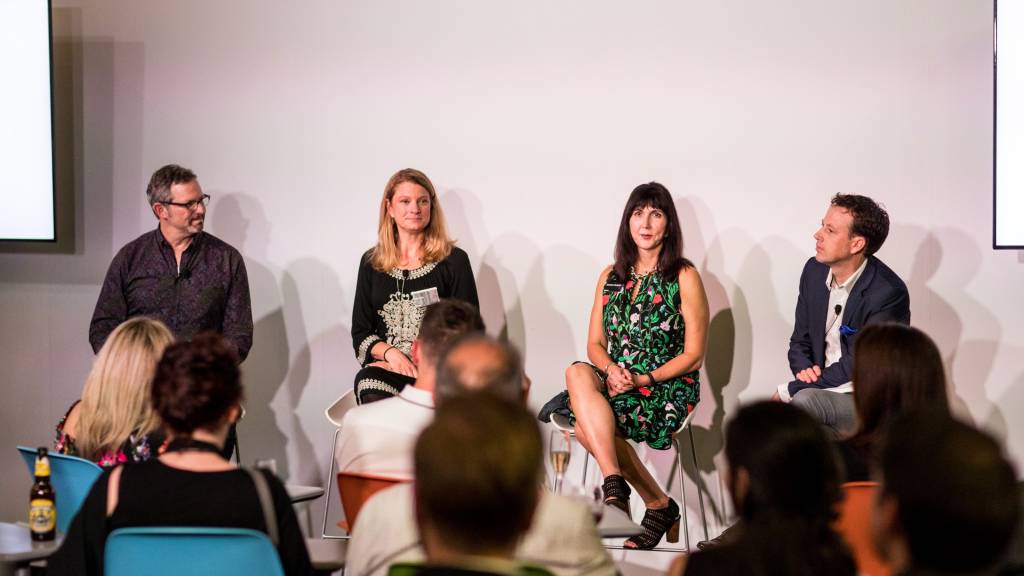
Together, Steelcase and Microsoft have integrated space and technology into the design of Creative Spaces to support the different ways people work throughout the creative process. Creative Spaces include a range of places and technologies to enable a creative rhythm.
“Technology is a great tool. But, it also has to be situated in a way that encourages people to use it,” said Congdon. “Sometimes our work environments give us hierarchical cues. They don’t invite us to participate. To have space and technology work together requires thoughtful planning. They can optimize one another.”
Congdon shared the example of a typical conference room. Everyone sits down and the person at the head of the table conducts most of the meeting. In this scenario, people can easily disengage. In contrast, the Ideation Hub is a Creative Space designed to encourage active participation. Stool-height seating provides everyone an equal opportunity to contribute as people co-create, refine and share ideas on the Surface Hub.
In addition to the Ideation Hub, four other initial Creative Spaces are designed for the work modes research says are critical to the creative process. The Focus Studio supports alone time to let ideas incubate. The Duo Studio is a shared space for paired co-creation. The Maker Commons encourages rapid prototyping and the socialization of ideas. And, the Respite Room offers a place for the brain to rest and form new connections.
Creative Spaces
Creative Spaces are now on display around the world in Sydney, Tokyo, New York, Chicago and London. To learn more about the creative process and how the environment can help, read The Creative Shift in the 360 Magazine.





